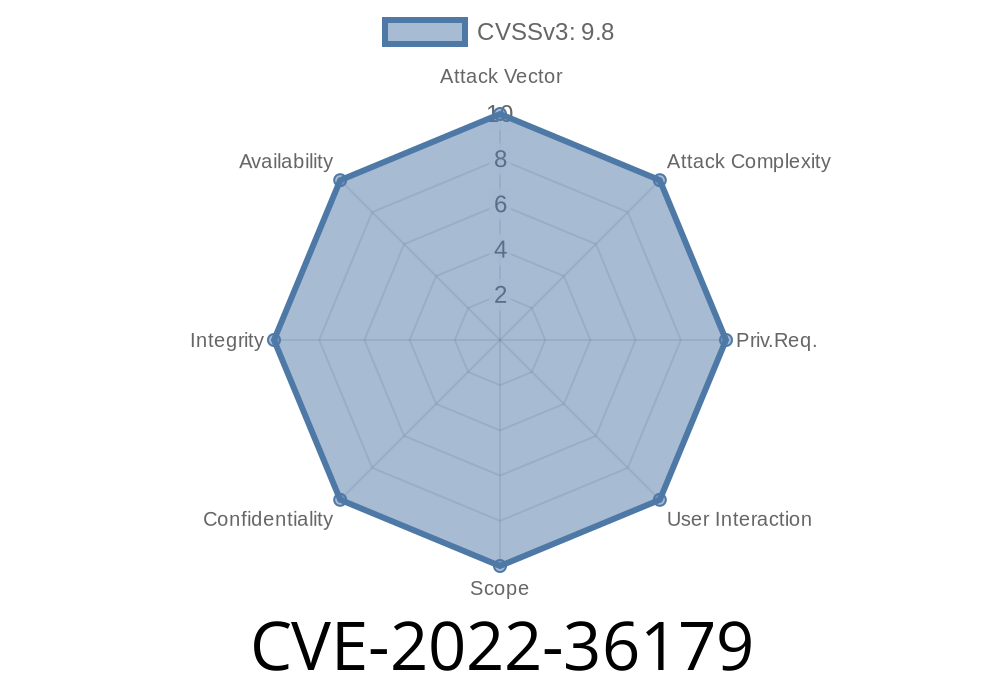FusionDirectory is a popular web-based solution that helps manage systems, services, and user accounts by offering a user-friendly interface and leveraging existing LDAP directories. However, FusionDirectory 1.3 has been currently found to suffer from an improper session handling vulnerability (CVE-2022-36179). This blog post delves into the details of this vulnerability and provides insights on how to exploit and mitigate it. We'll walk you through the code snippet responsible for the vulnerability, links to original references, and practical steps to assess this vulnerability on affected systems.
Vulnerability Details
Improper session handling in FusionDirectory can potentially lead to the unauthorized disclosure of session identifiers, which are crucial for maintaining the active session of a user account. An attacker can intercept the session identifiers to complete the web application's activities on behalf of a legitimate user without their knowledge or consent. This vulnerability primarily affects FusionDirectory 1.3.
A sample code snippet that demonstrates the vulnerability in FusionDirectory 1.3 is provided below
function vulnerable_session_handling() {
global $session_id;
if (!isset($_COOKIE['session_id'])) {
$session_id = generate_new_session_id();
} else {
$session_id = $_COOKIE['session_id'];
}
if (!validate_session_id($session_id)) {
$session_id = generate_new_session_id();
}
setcookie('session_id', $session_id);
}
This vulnerable code snippet allows an attacker to sniff or intercept an authenticated user's session identifier and use it in their browser to access the user's account on the application.
For more information about CVE-2022-36179, you can refer to the following official sources
1. CVE Details Page
2. FusionDirectory GitHub Repository
3. National Vulnerability Database (NVD) Entry
Exploit Details
To exploit this vulnerability, an attacker needs to intercept a user's session identifier while it's transmitted over the network. Subsequently, the attacker can use this stolen identifier in their browser as a cookie to access the user's account.
Here is a simple example of how to intercept a session identifier using a packet sniffer like Wireshark or tcpdump:
$ tcpdump -X -i eth tcp port 80 and src host <victim_ip> and dst host <target_application_ip> -vvv
This command will capture the traffic between the victim and the web application on port 80. The session identifier can be extracted using some pretty simple regex.
Mitigation
To address this vulnerability, it's recommended to follow the best practices for secure session management. Below are some possible steps to protect your FusionDirectory installation:
1. Update FusionDirectory to the latest version, if available. Keep an eye on the project's GitHub repository for updates.
2. Always use HTTPS instead of HTTP to encrypt the data transmission between the client browser and the web application server.
Conclusion
CVE-2022-36179 is a crucial vulnerability that underscores the importance of secure session handling in web applications. By understanding the exploit details and employing proper countermeasures, you can protect your FusionDirectory installation and safeguard your user accounts from unauthorized access.
Please note that this blog post is for educational purposes only, and we encourage you to apply the mitigations if your system is affected. Stay safe and secure!
Timeline
Published on: 11/22/2022 01:15:00 UTC
Last modified on: 11/28/2022 13:59:00 UTC
